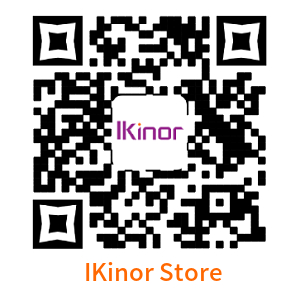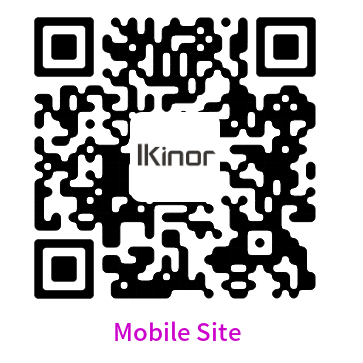Welcome to the world of technological innovation in education! As students, we all know how important it is to have interactive and engaging learning experiences. That’s where the remarkable tool called an interactive whiteboard for teaching comes into play. Whether you’re a teacher looking for ways to improve your students’ study or a student searching for an exciting and effective way to learn, this blog post is just for you. Get ready to dive into the benefits of using an interactive whiteboard for teaching in the classroom and discover how Ikinor can be your ultimate tool partner in enhancing teaching methods. So, let’s explore this incredible educational resource together!
What is an interactive whiteboard?
An interactive whiteboard for teaching is a powerful teaching tool that combines the traditional whiteboard with digital technology. It’s like having a giant touchscreen in your classroom! This innovative device allows teachers to display and manipulate content from various sources, such as textbooks, websites, educational software, and multimedia presentations.
With an interactive whiteboard, teachers can bring their lessons to life by incorporating dynamic visual elements. They can write or draw on the board using special stylus pens or even their fingers. The real-time interactivity of the board enables students to actively participate in the learning process. They can solve problems together, collaborate on group projects, and engage in hands-on activities.
One of the key features of an interactive whiteboard for teaching is its ability to connect with other devices like computers and tablets. This means that teachers can easily access online resources, share content with students instantly, and even save notes for future reference.
Furthermore, an interactive whiteboard for teaching encourages active engagement among students by allowing them to come up to the front of the class and interact directly with the board. This not only enhances their understanding but also boosts their confidence.
An interactive whiteboard for teaching revolutionizes traditional teaching methods by fostering a more dynamic and engaging learning environment. Its versatility and interactivity make it a valuable tool for both educators and learners alike.
Advantages of using an interactive whiteboard for teaching for teaching
Interactive whiteboards have revolutionized the way teachers interact with their students. These innovative tools offer a wide range of advantages that help improve students’ study and engagement in the classroom.
Interactive whiteboards allow for dynamic and visually appealing presentations. Teachers can display colorful images, videos, diagrams, and charts to enhance their lessons. This visual stimulation captures students’ attention and makes learning more enjoyable.
These boards promote active participation among students. With touch-screen capabilities, students can directly interact with the content being displayed. They can solve problems on the board or annotate important information during discussions. This hands-on approach encourages critical thinking skills and fosters a collaborative learning environment.
Additionally, interactive whiteboards provide endless opportunities for multimedia integration. Teachers can easily incorporate educational software, online resources, and interactive quizzes into their lessons. This integration allows for personalized learning experiences tailored to each student’s needs.
Furthermore, these boards facilitate effective feedback mechanisms. Students’ work can be instantly displayed on the board for peer review or teacher evaluation. This immediate feedback helps identify areas of improvement and encourages continuous growth.
Interactive whiteboards increase accessibility in classrooms by accommodating diverse learning styles and abilities. Features like text-to-speech functionality benefit auditory learners while visual aids assist visual learners.
In conclusion (as per writing instructions), integrating an interactive whiteboard for teaching into the classroom setting improves students’ study experience overall by fostering engagement through dynamic presentations, promoting active participation through touch-screen capabilities encouraging critical thinking skills as well as providing opportunities for multimedia integration allowing personalized learning experiences offering valuable instant feedback mechanisms facilitating inclusive education environments accessible to all types of learners
Conclusion
In today’s digital age, students need tools that can enhance their learning experience and improve their study habits. The interactive whiteboard for teaching is one such tool that has revolutionized teaching in classrooms around the world. With its ability to engage students, encourage collaboration, and provide a visual representation of concepts, the interactive whiteboard for teaching is truly a game-changer.
By incorporating an interactive whiteboard for teaching like Ikinor into the classroom setting, teachers have the power to transform traditional lessons into dynamic and immersive experiences. Students are no longer passive learners but active participants in their education. They can interact with content, manipulate images and videos, solve problems together as a team – all while having fun!
The advantages of using an interactive whiteboard for teaching are numerous. It promotes student engagement by catering to various learning styles and preferences. Visual learners benefit from the use of multimedia elements such as images and videos, auditory learners can listen to audio recordings or lectures through integrated speakers, and kinesthetic learners can physically interact with content through touch capabilities.
Furthermore, an interactive whiteboard for teaching encourages collaborative learning as it allows multiple students to work together on projects or problem-solving activities simultaneously. This fosters teamwork skills and helps develop critical thinking abilities in students.
Not only does an interactive whiteboard for teaching make teaching more effective for educators by providing them with advanced tools like annotation features or virtual manipulatives but it also makes learning more enjoyable for students who get to actively participate rather than just absorb information passively.
In conclusion , embracing technology like Ikinor‘s interactive whiteboards is essential for modern-day classrooms aiming to improve student study habits effectively. By harnessing the power of interactivity and collaboration through these innovative tools, teachers empower their students’ academic journey while preparing them for success in our increasingly digital world.



